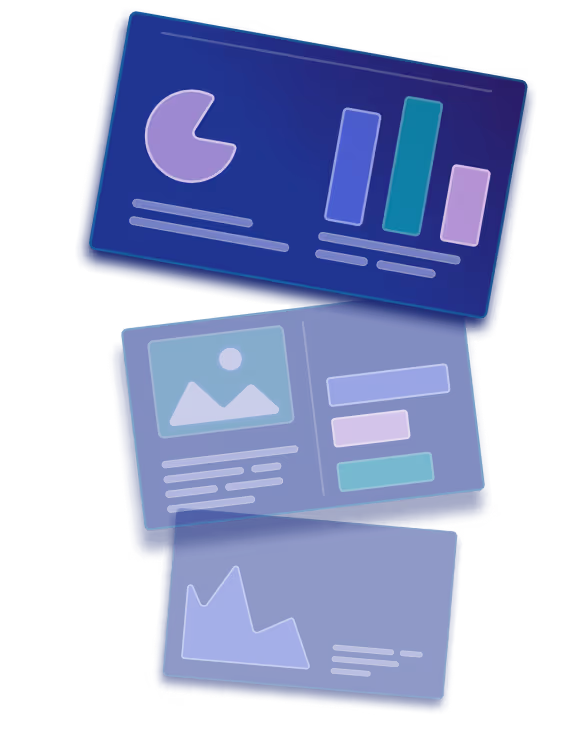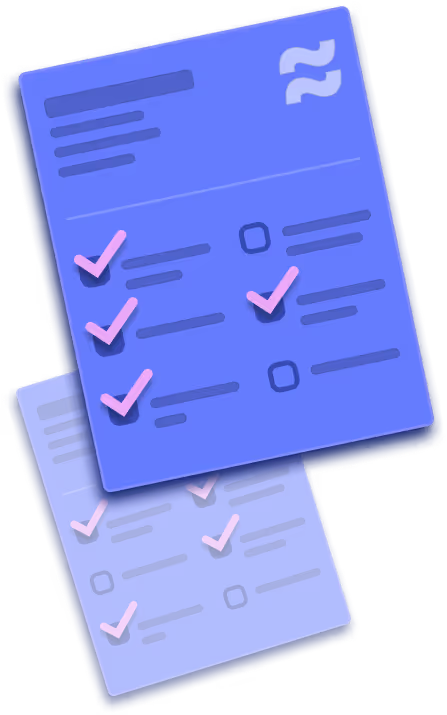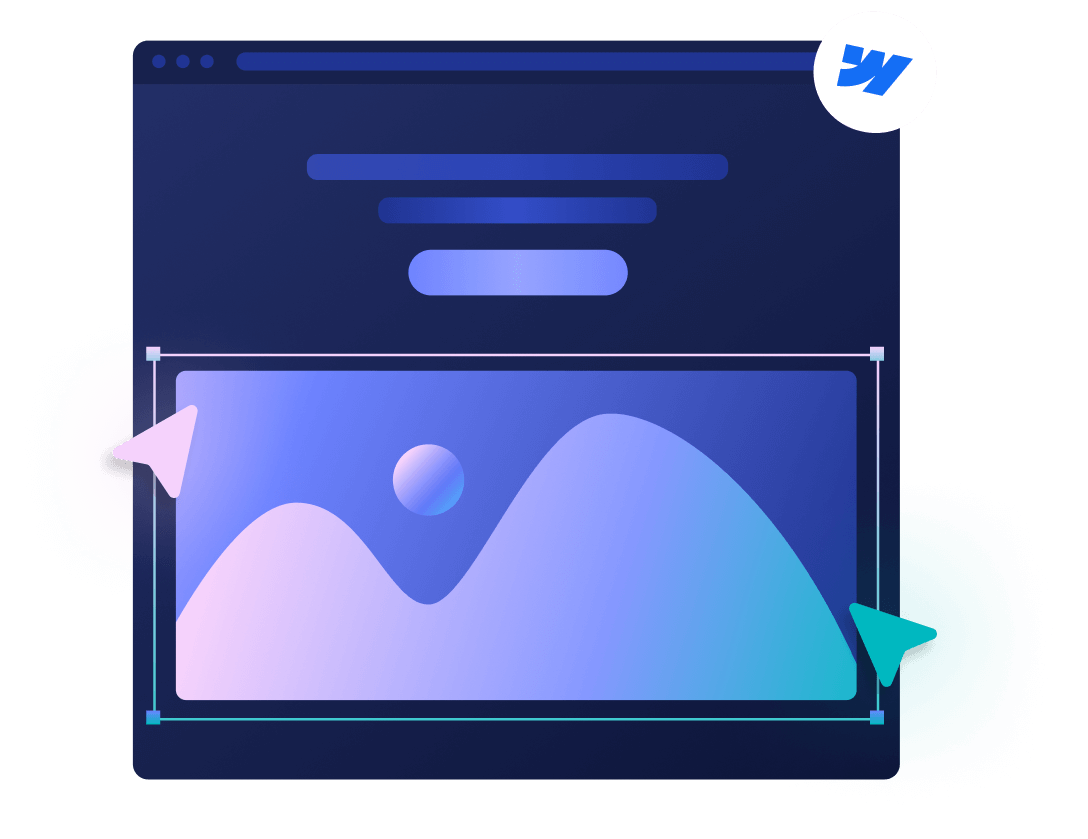
Best SEO Tips for Enterprise SaaS Websites + GEO Tips
Key takeaways
- Enterprise SaaS SEO requires long-term, scalable strategy—not quick fixes or high-volume blogging.
- Strong technical SEO early on ensures clean structure, fast performance, and efficient crawlability as the site expands.
- Prioritize long-tail, high-intent keywords and match each query with the correct page type to attract real buyers.
- Use glossaries, comparison pages, and programmatic SEO to scale content and build topical authority beyond blogs.
- Focus off-page efforts on high-quality backlinks, authoritative mentions, and competitor roundups to build trust.
- GEO aligns closely with SEO, so structure content for easy extraction using schema, conversational writing, FAQs, and an LLMs.txt file.
SEO for SaaS websites is a long and complex game, not a simple checklist. To be successful, your SEO strategy needs to address challenges such as massive site structures, long sales cycles, and technical buyers who read everything with scrutiny.
I’ve seen too many SaaS companies rely solely on blog posts and low-intent keyword targeting. However, in this space, palpable growth comes from structuring your site for scalability, targeting high-intent queries, and building trust and long-term authority.
In this guide, I’ll break down the best SEO tips for enterprise SaaS websites across three key areas:
- Technical SEO
- On-page SEO
- Off-page SEO
Since most of these practices also apply to Generative Engine Optimization (GEO), I’ll also show you how to future-proof your content for AI-based search and increase your LLM citations.
{{cta}}
Technical SEO Tips for Enterprise SaaS
Enterprise websites need a strong foundation to be able to scale well long term. That’s why technical SEO should not be an afterthought. Instead of using it to focus on problem-solving, leverage it early to avoid future headaches by considering the following tips:
- Prioritize Crawlability and Scalability Early
- Core Web Vitals Still Matter (But Don’t Obsess)
- Fix Broken Links and Avoid Redirect Chains
Prioritize Crawlability and Scalability Early
When I work on a large Webflow SaaS website, one of the first things I look at is how easily search engines can crawl and index content. Considering the scale, this isn’t something you want to fix retroactively. Instead, technical SEO should be set up properly from the get-go and then reviewed regularly as the site evolves.
Why? Because as your site grows, crawl efficiency and structure begin to matter more. Without it, you risk wasting crawl budget and introducing indexation issues that could slow your growth.
Here’s what I recommend focusing on for a bulletproof approach:
- Build and submit an XML sitemap to help search engines easily find and prioritize the right URLs.
- Use canonical tags properly to prevent duplicate content issues and clarify which version of a page should be indexed.
- Design a strong internal linking strategy to distribute authority, ensure discoverability, and help users navigate your site logically.
- Use the right CMS. Platforms like Webflow support SEO efforts by making it easier to maintain a clean and scalable site structure.
Core Web Vitals Still Matter (But Don’t Obsess)
Core Web Vitals (CWVs) are no longer a direct ranking factor, but that doesn’t mean they have become irrelevant. Based on my experience, CWVs have a strong impact on site performance and UX, as metrics like load speed and mobile responsiveness still play a huge role in how users interact with your content (which in turn affects conversions and retention).
We aim for a load time below 2.5 seconds, which is the baseline for a smooth experience, especially on mobile. Longer load times may cause your users to bounce quickly.
In addition, when working on enterprise SaaS sites, we also focus on:
- Reducing layout shift by setting size attributes on images, videos, and embeddable elements.
- Optimizing pages for mobile responsiveness because, globally, mobile devices account for the majority of internet traffic, with estimates ranging up to 65%.
- Lazy loading images to lighten the initial load time.
Still, your technical teams don’t need to obsess over hitting perfect Lighthouse scores across all pages. Instead, they should focus on key product and landing pages, which have the highest impact on your revenue.
Fix Broken Links and Avoid Redirect Chains
Broken links and long redirect chains are one of the most common issues on enterprise SaaS sites due to the sheer number of published pages.
To mitigate these issues early, I recommend running regular audits (at least once per quarter) using site audit tools like Screaming Frog, Ahrefs, or Semrush and focusing on:
- 404 errors: Broken links that go nowhere.
- Redirect chains: Multiple hops between articles before reaching the final URL.
- Outdated internal links: Links that still point to redirected pages.
Whenever possible, I recommend replacing redirected internal links with their final destination URLs. This may seem like a small fix, but it preserves crawl budget and prevents search engines from wasting time, leading to easier indexation.
More importantly, these fixes improve user experience. Broken links erode trust and redirect chains slow things down, both of which hurt user retention and conversion rates.
On-Page SEO and Content Tips
Enterprise SaaS websites need content that speaks to technical buyers, supports complex sales cycles, and builds topical authority across a wide range of topics.
Achieving this is not rocket science, but success depends on employing the following tried and true SEO techniques:
- Target long-tail, high-intent keywords
- Match keyword intent with page type
- Go beyond blogs — use glossaries and programmatic SEO
Target Long-Tail, High-Intent Keywords
When designing content strategies for large SaaS brands, I don’t chase broad, high-volume keywords. Instead, I target long-tail, high-intent phrases tied to your product’s capabilities, which is how real buyers search when they are closer to making a decision.
These keywords are usually longer and more specific, which also helps you optimize for AI-based search. Here are a few examples:
- Compliance automation tools for finance teams
- SOC 2 readiness checklist for startups
- How to build a successful risk mitigation strategy in healthcare
These keywords won’t pull in tens of thousands of clicks, but they’ll attract the right people who are more likely to convert.
To boost topical authority, build content clusters around these terms using comparison pages, blog posts, guides, and solution pages. This will tell Google that you are the authority in this space and consequently improve your visibility in AI overviews.
Match Keyword Intent with Page Type
Different types of keywords have distinct search intents, and ranking for them results in varying outcomes. In the enterprise SaaS space, the two main types are:
- Commercial or bottom-of-funnel (BOFU) keywords: Keywords like “best compliance automation software,” “best VRM for B2B SaaS,” or “ISO 27001 compliance checklist for SaaS” signal strong buying intent because people search for them when evaluating solutions and getting ready to buy.
- Informational or top-of-funnel (TOFU) keywords: Keywords like “compliance,” “what is vendor risk management,” or “what is NIS 2” are broader and searched by people doing high-level research.
One of the biggest on-page mistakes I see SaaS companies make is misaligning keyword intent with page type. For example, they may target a bottom-of-funnel (BOFU) keyword with a blog post and use a product page to rank for a low-intent, top-of-funnel (TOFU) term like “compliance.”
Instead, commercial or BOFU keywords should be targeted with product and solution pages, and blog posts and guides should cover TOFU topics that educate and build authority.
Go Beyond Blogs — Use Glossaries and Programmatic SEO
Buyers in the enterprise SaaS space often search for specific terms, comparisons, and use cases tied directly to your product. So, if you’re relying solely on blog posts to generate search traffic, you may be leaving a lot on the table.
One high-performing strategy is to create glossaries for industry-specific terms that rank easily for definitional keywords like “what is a vendor risk assessment questionnaire” or “definition of SOC 2.”
Another powerful tool is programmatic SEO — an automated or semi-automated approach to creating and optimizing a large number of pages, nowadays often generated using AI. This method is particularly useful when building:
- Comparison pages (e.g., “vendor A vs. vendor B”)
- Use case hubs (e.g., “compliance software for healthcare,” “for fintech,” or “for startups”)
- Automated landing pages for repeatable content types
These scalable content formats are especially helpful when your SaaS platform has multiple features and integrations, something that’s common in the Webflow enterprise environment. They also support both SEO and GEO, as LLMs are more likely to suggest and cite topic-specific, well-structured content that’s easily skimmable and comparable.
Off-Page SEO Tips
You can have the best and most optimized content in the world, but it’s unlikely to rank without authority. That’s where off-page SEO can make a difference by helping you build relevance and trust through high-quality backlinks.
To help you maximize the benefits of this underutilized approach, I’ll focus on the following tips:
- Prioritize backlinks for landing pages
- Mentions matter in the age of AI
- Get featured where competitors are listed
- Use classic tactics that still work
Prioritize Backlinks for Landing Pages
Backlinks are still one of the strongest ranking factors in Google’s algorithm. According to Backlinko’s analysis of 11.8 million Google search results:
- The #1 result in Google has an average of 3.8x more backlinks than positions #2–#10.
- Getting backlinks from multiple sites has a positive impact on rankings.
Unfortunately, winning high-quality backlinks is time-consuming and resource-intensive.
That’s why you should focus your link-building efforts on revenue-generating product pages, solution pages, and other landing pages, not informational blogs.
Still, remember that, in Google’s eyes, backlinks should be earned organically, which I recommend doing through:
- PR campaigns: Use them to announce product launches or company achievements.
- Partnerships: Collaborate with successful brands to earn backlinks and gain authority.
- Expert quotes: Your SME’s quotes can help you land mentions and increase visibility.
Avoid buying backlinks, however tempting it may be, because it violates search engine guidelines, can lead to penalties, and often results in low-quality links.
Mentions Matter in the Age of AI
Backlinks aren’t the only off-page signals that matter anymore. Contrary to search engines, LLMs value brand or product mentions even without hyperlinks, prompting them to surface your brand more often in AI-generated responses.
Instead of following backlinks like traditional search engine crawlers, LLMs rely on semantic relationships to associate your brand with a certain topic and give you more authority.
That’s why I recommend making it a priority to appear in:
- Listicles
- Product comparisons
- Directories
- News coverage from trusted media
To track your presence and mentions, use tools like Ahrefs or Brand24. By identifying relevant mentions, you can also find unlinked opportunities and reach out to publishers to ask for potential backlinks. Additionally, you can use these tools to identify where your competitors are being referenced and create a strategy on how to get included.
Remember, in the enterprise space, just being named in the same sentence as your well-established competitors can help boost your brand’s credibility.
Get Featured Where Competitors Are Listed
If your competitors are showing up in third-party roundup articles and “best of” lists but you’re not, you’re missing out on valuable opportunities for increased visibility.
Roundup-style pages, such as “Best DevOps Platforms in 2025” or “Best SaaS Platforms for Compliance Management” are often where LLMs source information when generating tool recommendations or summaries. The more you appear in these lists, the more likely you are to be surfaced in AI results.
Here’s a simple approach I use to get featured more often:
- I seek out articles where direct competitors are listed and our brand isn’t.
- I reach out with a concise pitch, a list of relevant features, and a reason why our product deserves to be included.
This is often a win-win situation, as including your product may allow publishers to fill a unique gap in the market or present a fresh differentiator that would make their page stand out.
Use Classic Tactics That Still Work
SEO specialists working on enterprise SaaS websites need to stay on top of the newest trends and algorithm updates. Still, old-school tactics shouldn’t be brushed aside, as most still work and deliver results.
For example, I still consistently use the following tactics and get palpable results:
- Guest blogging: Excellent for building relationships and credibility, as publishing on high-authority websites drives referral traffic and boosts topical authority.
- Co-marketing content: Partnering with complementary tools or services on creating comparison pages, webinars, or whitepapers can result in organic backlinks and press coverage.
- Expert roundups: Ask your SMEs to contribute their opinions in industry interviews and attend podcasts, which will give you additional brand mentions and contextual backlinks.
You can also use HARO and similar tools to respond to journalists’ questions and earn backlinks from top-tier media platforms and publishers.
Finally, use tools like Ahrefs to find broken links pointing to old pages and redirect them to updated pages or ask the publisher to update the URL.
How These Tips Also Apply to Generative Engine Optimization (GEO)
Even though the search landscape has significantly changed in the past few years, there’s still a huge overlap between SEO and GEO. Namely, about 95% of what applies to traditional SEO also applies to GEO. Content quality, skimmable structure, intent alignment, and topical authority are still the foundation.
The only difference is that LLMs don’t rank content; they extract it. That means that you are not fighting for position #1 anymore; you’re fighting to be quoted in a machine-generated summary. Therefore, it’s important to remember that LLMs love to extract content that’s:
- Easy to scan
- Easy to trust
- Structured like a direct answer
So, if you’re already following strong SEO practices, you’re halfway there. The rest comes down to the following practices I’ll explain below:
- Use schema markup properly
- Create an LLMs.txt file
- Write conversationally, not just formally
- Use FAQs and key takeaways strategically
Use Schema Markup Properly
Schema is a structured format that adds context to your pages. Using it properly allows AI to read and understand your content the right way, telling it what’s a product, what’s an FAQ, what’s a review, etc.
Here are the four types of schema I typically use when working on Webflow sites for enterprise companies:
- Organization schema: Helps AI understand your identity and key brand details.
- Product schema: Allows you to highlight your SaaS platform’s key features and pricing.
- FAQ schema: Structures your FAQs so they can be pulled directly into AI-generated answers.
- Article schema: Applies to blog content and helps distinguish the author, publishing date, and content type.
To find additional schema markup types that may be more suitable for your organization, give Google’s Schema Markup Guide a thorough read.
Create an LLMs.txt File
The LLMs.txt file is like a sitemap, but specifically for AI. This file is placed at the root of your domain and guides LLMs toward the most important pages you want them to surface.
Here’s which pages I typically include:
- Top product and solution pages, especially those targeting commercial keywords.
- Help docs or knowledge base articles, great for surfacing in how-to or troubleshooting queries.
- High-performing blog posts and guides, especially if they rank well and earn backlinks.
Creating the file is simple — just list the URLs you want to prioritize, one per line. You can also use some of the many tools available online to build one in minutes.
Write Conversationally, Not Just Formally
LLMs don’t think like search engines; they think like users, so you should write your content to mirror how people naturally speak and search. The more natural your content sounds, the more likely it is to appear in AI-generated responses.
Here are a few simple rules I follow:
- Use clear, conversational language that answers questions directly.
- Incorporate real queries people would ask AI, such as “How does compliance automation work?” or “What’s the difference between HIPAA and HITRUST?”
- Include “how,” “why,” or “what” phrasing in your headings to match users’ question-based queries. Instead of “HIPAA violations and fines,” write “What are the main HIPAA violations and fines?”
Finally, cut the fluff and long intros and answer the prompt in the first sentence in plain English without the jargon and buzz words.
Use FAQs and Key Takeaways Strategically
When used strategically, FAQs are one of the most effective tools for GEO and traditional SEO. They already answer users’ queries in a way that’s easy to extract.
I recommend adding them to every key page, especially product landing pages, solution pages, and high-performing blog posts. They’ll allow you to answer high-intent questions in natural language, which is the kind of content LLMs love to base their overviews on.
To make your FAQs even more powerful, consider using schema markup, writing in a conversational tone, and keeping the answers short, direct, and actionable.
In addition to FAQs, I also include a short key takeaway section at the top or bottom of major pages. These work like mini TL; DRs, distilling your content into snippets that LLMs and search engines can easily understand and extract.
{{cta}}
Conclusion: What to Prioritize (and Budget For)
SEO for enterprise SaaS websites isn’t something you can set and forget or force with dozens of weekly blog posts. It’s a marathon that requires a deep understanding of your target audience and the inner workings of search engines.
How you structure your SEO roadmap depends on your goals, timeline, and internal bandwidth. For example, if you’re launching a new product, landing page content and technical SEO may take priority.
Remember that both on-page and off-page strategies take time to show results, so they need to be done long-term. What matters the most is strategy consistency, not high-volume publishing.
If your team is ready to build a scalable SEO strategy, reach out to Flow Ninja. We’ve helped multiple enterprise SaaS companies build fast-loading, structured, and conversion-efficient websites that search engines and AI tools trust and love.
Frequently Asked Questions
What metrics should enterprise SaaS companies track to measure SEO ROI?
SaaS companies should track metrics such as organic traffic to product pages, keyword rankings for high-intent terms, lead conversion rates from organic sources, backlink quality, and SEO-driven closed-won revenue. Tools like Google Search Console and attribution analytics can help assess these KPIs effectively.
How does programmatic SEO differ from traditional content strategies?
Programmatic SEO automates the creation of scalable, template-based pages, such as comparison or glossary entries, often driven by structured data. Unlike traditional SEO, which focuses on individual content pieces, programmatic SEO enables high-volume content generation for targeting long-tail and niche intent at scale.
What role does internal linking play in enterprise SaaS SEO?
Internal linking distributes link equity, guides crawl paths for search engines, and improves user navigation. For SaaS websites with large architectures, a strategic internal linking plan ensures key product and solution pages are discoverable and signals topic relevance for better ranking.
Can Webflow effectively support enterprise-level SEO for SaaS?
Webflow can support enterprise SEO when configured properly. It provides clean code, scalable structure, CMS flexibility, and native controls for SEO elements like meta tags, open graph data, and schema markup, making it a viable no-code option for performance-focused SaaS sites.
What is the difference between SEO and Generative Engine Optimization (GEO)?
SEO focuses on ranking in traditional search engines, while GEO optimizes content for AI language models that generate answers. GEO prioritizes natural language, semantic clarity, and structured, skimmable formats to increase the likelihood of being cited in generative search results.
How often should enterprise SaaS websites perform SEO audits?
SEO audits should be conducted quarterly for enterprise SaaS sites due to their scale and frequent updates. Regular audits help identify issues like broken links, redirect chains, outdated content, and technical decay that can hinder crawlability and performance over time.
Which schema markups are most beneficial for SaaS SEO and GEO optimization?
Key schema markups for SaaS sites include Organization, Product, Article, and FAQ schema. These help search engines and AI tools better understand content context, improve rich results in SERPs, and increase the chances of citation in generative AI responses.






.svg)


-min.png)




.png)
.png)




.png)

.png)
.png)








.svg)

.png)
.png)
.webp)
.svg)

